AMD has officially unveiled its latest line of processors, the Ryzen AI 300 series, or the Strix Point. This new series integrates advanced artificial intelligence (AI) capabilities directly into the CPU with XDNA2.
AMD has also chosen to change their laptop processors naming scheme, yet again. However, the new naming scheme will make it easier for an average consumer to categorise products.
Key Features and Specifications
The Ryzen AI 300 series processors are built on AMD’s latest Zen 5 architecture and feature RDNA 3.5 graphics. One of the most notable advancements is the inclusion of the XDNA 2 neural processing unit (NPU), which delivers up to 50 tera operations per second (TOPS) of AI performance.
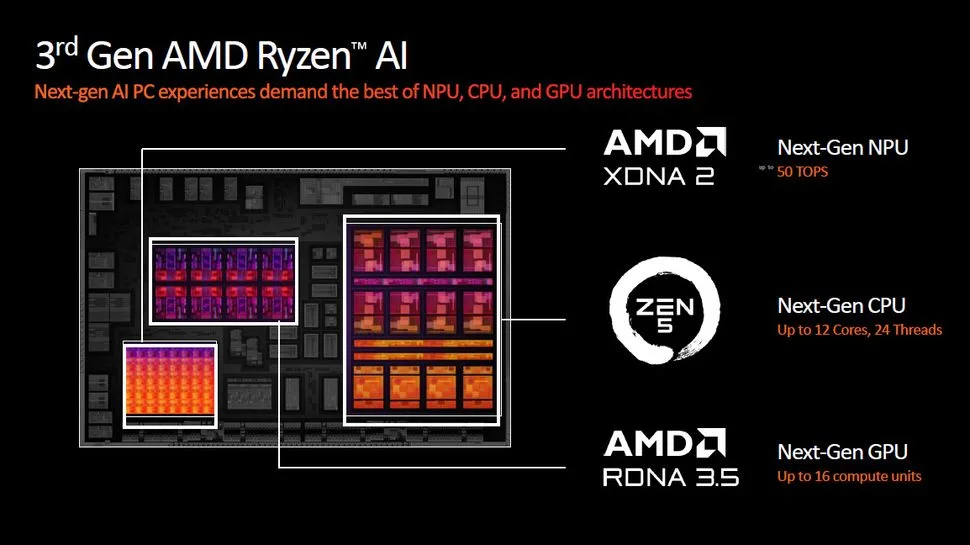
The new lineup includes models such as the Ryzen AI 9 HX 370 and Ryzen AI 9 365. These chips are expected to feature up to 12 cores, combining Zen 5 and Zen 5c cores, and will include up to 16 compute units based on the RDNA 3.5 architecture.
The integrated NPU in these processors significantly boosts AI performance, making them ideal for tasks like machine learning and other AI-intensive operations.
Also Read: AMD Roadmap Explained: From 2023 to 2025 and Beyond
Ryzen AI 300 series laptop processors
AMD has expanded its mobile processor lineup with the introduction of two new chips under the Ryzen AI 300 series. This rebranding aims to simplify the shopping experience for consumers looking for high-performance laptops with integrated AI capabilities.
Ryzen AI 9 HX 370
The Ryzen AI 9 HX 370 stands out as the flagship model of the series. It boasts 12 cores and 24 threads, split between four standard Zen 5 cores and eight Zen 5c cores. The Zen 5c cores are designed to be more efficient, albeit slightly less powerful, allowing for better GPU and NPU integration.
The chip operates at a base thermal design power (TDP) of 28W, with a configurable TDP (cTDP) ranging from 15W to 54W, providing flexibility for different performance needs and power constraints.
The HX 370 is equipped with the RDNA 3.5-based Radeon 890M integrated GPU, featuring 16 Compute Units (CUs). AMD claims that this setup offers up to 36% better gaming performance compared to Intel’s integrated Arc graphics in the Core Ultra 185H CPU.
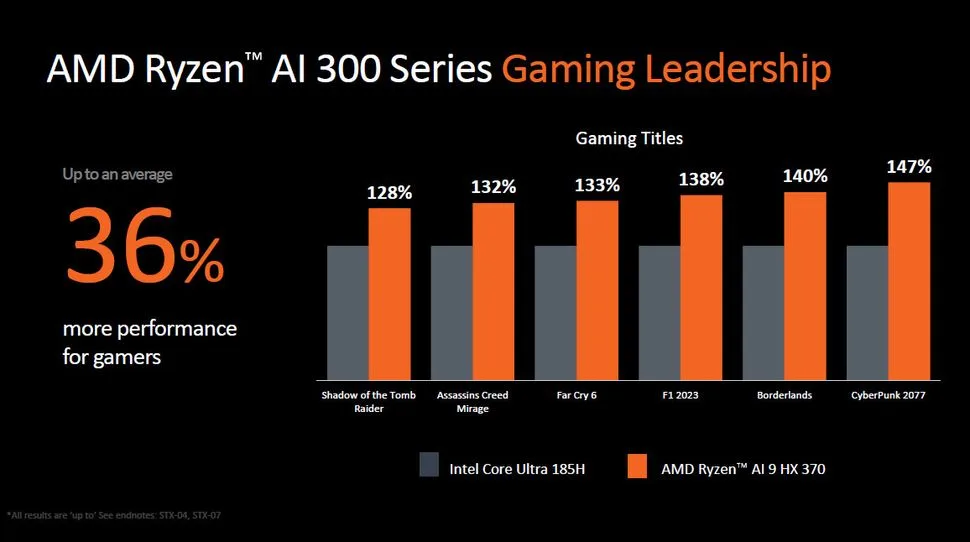
Ryzen AI 9 365
Positioned just below the HX 370, the Ryzen AI 9 365 features 10 cores and 20 threads, comprising four Zen 5 cores and six Zen 5c cores. It maintains a boost clock of up to 5.0GHz and shares the same base TDP of 28W with a wide cTDP range, ensuring versatile performance across various use cases.
The AI 9 365 comes with the RDNA 3.5-based Radeon 880M integrated GPU, which has 12 CUs. While it offers slightly lower graphics performance compared to the 890M in the HX 370, it still promises robust capabilities for gaming and AI tasks, striking a balance between power and efficiency.
Ryzen AI 300 series new naming scheme
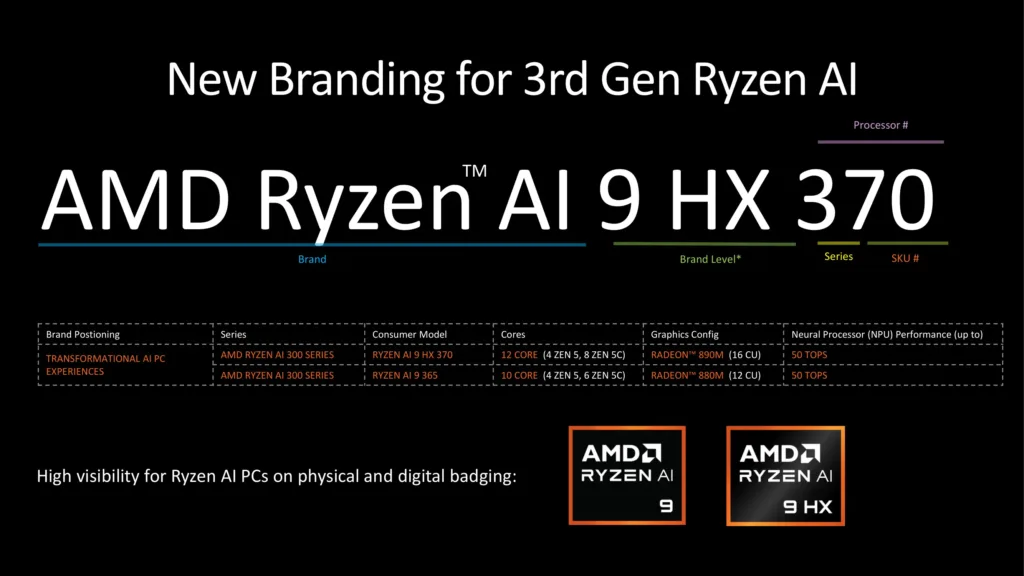
While maintaining the familiar Ryzen branding, AMD is introducing a new naming convention to highlight its NPU-equipped processors, now branded as “Ryzen AI.” This change is particularly significant as AMD resets its numbering system, beginning with the 300 series instead of continuing with the Ryzen Mobile 9000 series.
The new Ryzen AI 300 naming scheme is straightforward. The “Ryzen AI” label indicates the inclusion of an NPU within the chip’s silicon. The subsequent “9/HX” denotes the processor’s brand level and its position within AMD’s product hierarchy.
The “370” further breaks down into two parts: the “3” signifies the third generation of AMD’s NPU technology, while the “70” represents the specific part number and SKU, providing an easy-to-understand structure for consumers navigating AMD’s product offerings.
Related: AMD Announces Ryzen 9000 Series Desktop Processor; Offers 16% IPC increase
Ryzen AI 300 series availability
AMD is set to showcase its new Ryzen AI 300 series of mobile chips at Computex. Alongside these processors, prominent vendors like ASUS and MSI are unveiling their platforms designed to leverage these advanced SoCs.
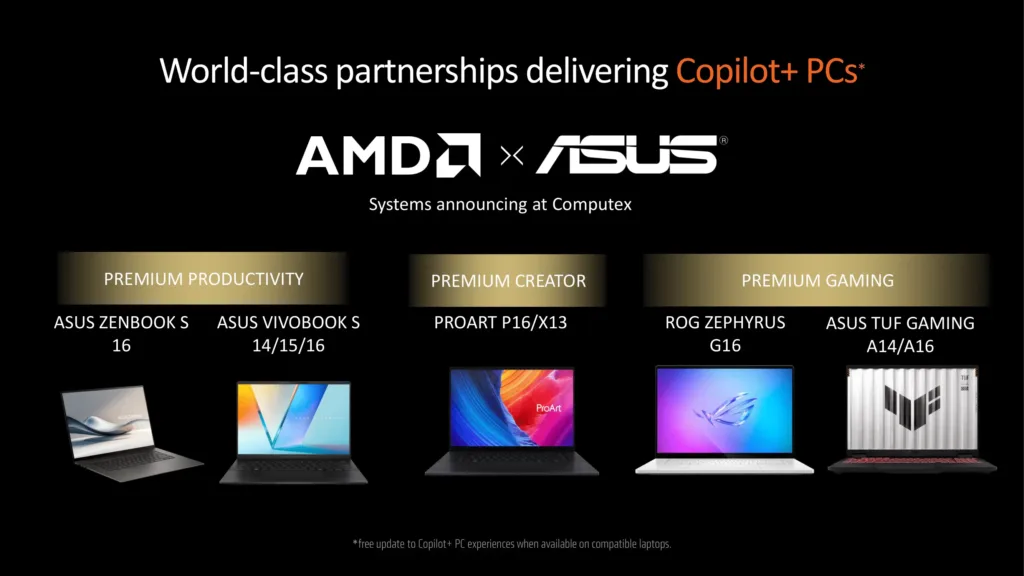
Some of the upcoming models featuring these new chips include the ASUS Zenbook S 16 and the ASUS VivoBook S series (14/15/16), which are geared towards productivity. MSI is also entering the fray with the foldable Summit A16 AI+ and the gaming-centric Stealth A16 AI+.
The Ryzen AI 9 HX 370 and Ryzen AI 9 365 are expected to hit the market in July. Following the launch, over 100 designs from OEMs and notebook vendors such as Acer, Dell, HP, Lenovo, and MSI are anticipated to release, offering a wide range of new notebooks.
While pricing details are yet to be announced by the OEMs, it is expected that these new models will be priced similarly to the previous Ryzen 8040 series notebooks.
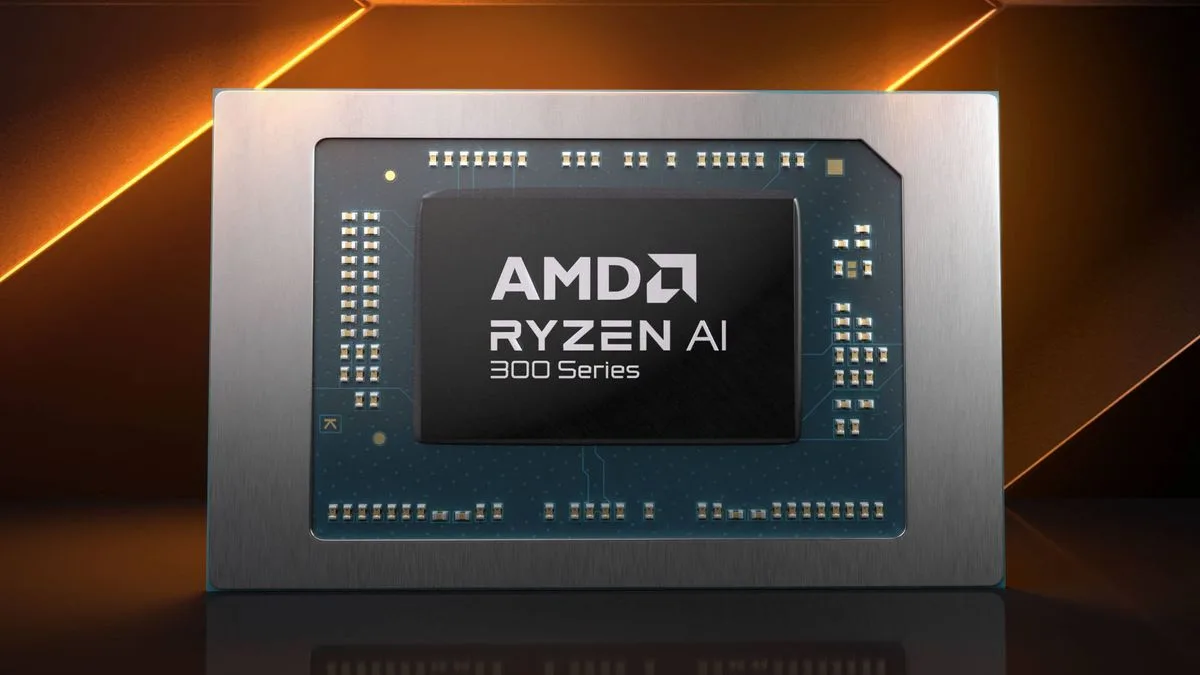
Leave a Reply
You must be logged in to post a comment.